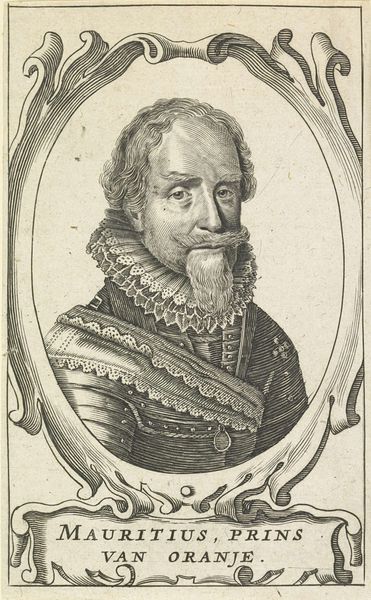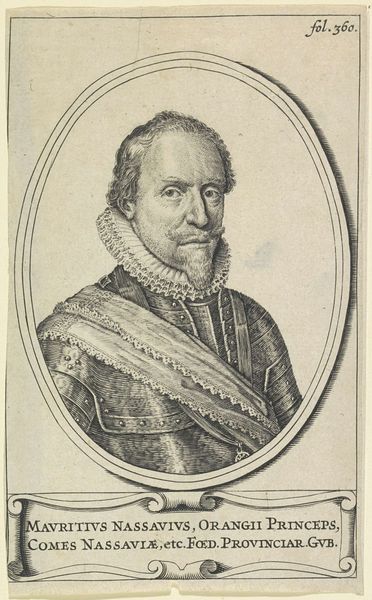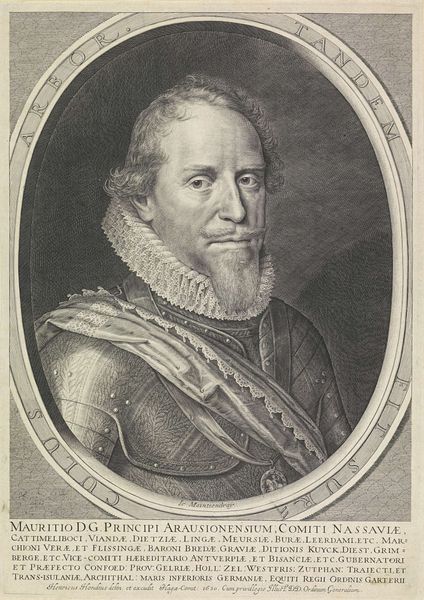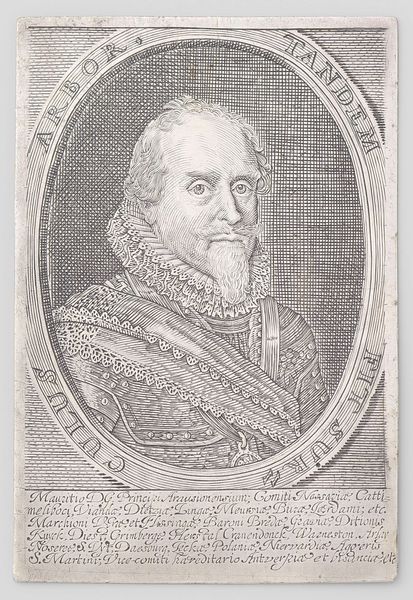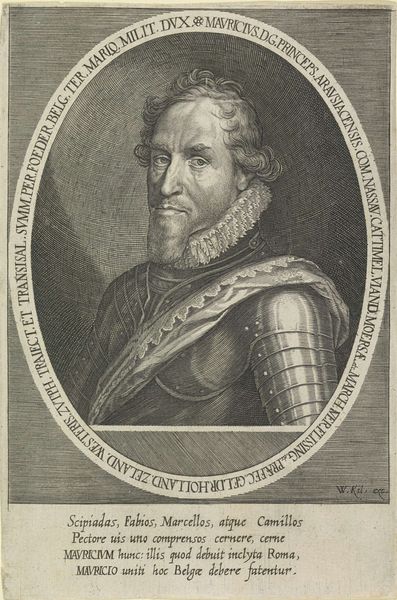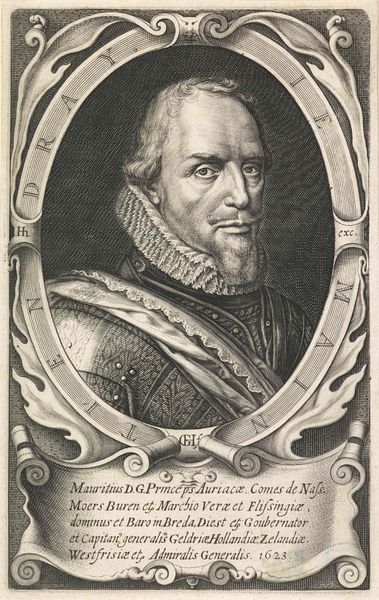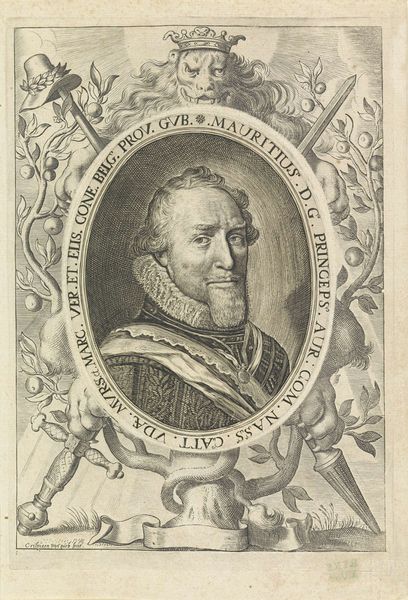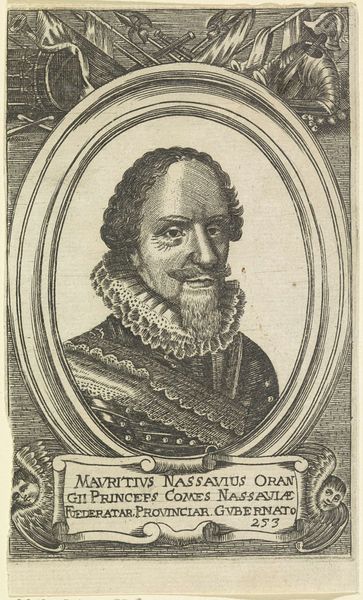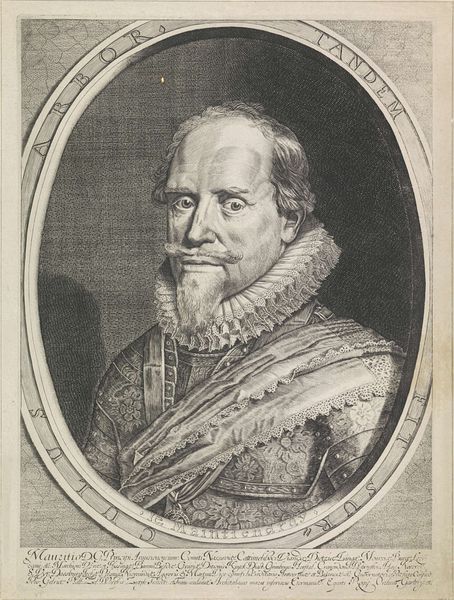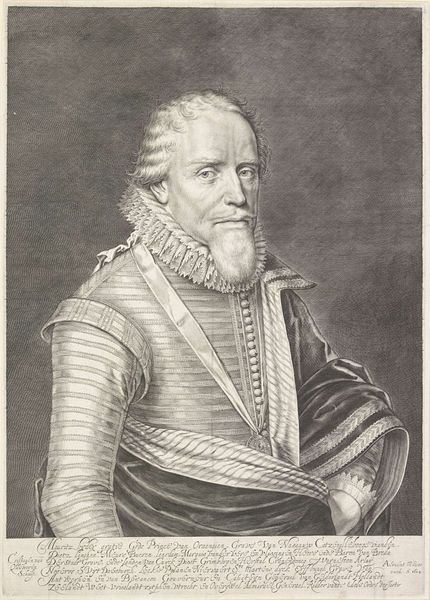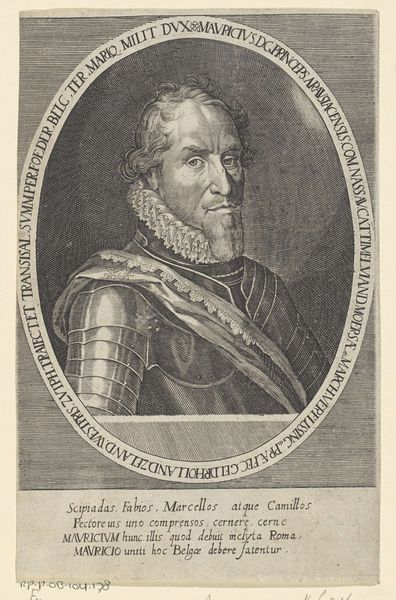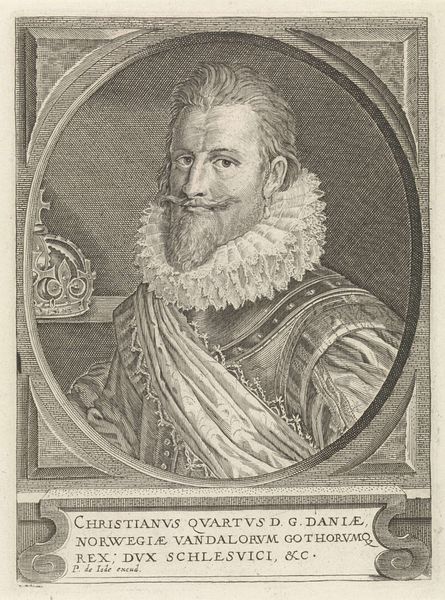
print, etching, engraving
#
portrait
#
baroque
#
dutch-golden-age
# print
#
etching
#
history-painting
#
engraving
Dimensions: height 157 mm, width 115 mm
Copyright: Rijks Museum: Open Domain
Editor: Here we have a 17th-century portrait of Maurits, Prince of Orange. It's an engraving, which gives it this amazing intricate quality. The prince’s expression seems quite intense, even burdened. How would you interpret this work, considering the time it was made? Curator: That's a keen observation. It's vital to see this not just as a portrait, but as a political statement embedded within the Dutch Golden Age and its evolving national identity. Engravings like these were mass-produced. Who was the target audience and what messages about power and leadership were they designed to communicate? Editor: I hadn't really thought about the mass production element; that shifts my perception. Were these images designed to legitimize his power, maybe? Curator: Precisely. Think about the Eighty Years’ War with Spain happening then. This image presents Maurits as a strong leader, essential for national survival. The visual language, the stern gaze, and the princely attire – all perform a carefully constructed narrative of power. How might this image also relate to burgeoning Dutch mercantile power at the time? Editor: So, the image does more than immortalize his face, it promotes him. And thinking about trade, it's a way of associating him with wealth and prosperity? Curator: Exactly. He embodies Dutch ambitions. How does that alter your view of his 'burdened' expression, now? Might it represent the weight of leadership and responsibility during a pivotal period? Editor: It definitely complicates it. It’s not just a personal emotion, but maybe a performance of leadership. This was much more than just art for art’s sake! Curator: Precisely. By situating it within the political, social, and economic contexts of its time, we can unravel how seemingly straightforward portraiture participated in broader historical narratives. Editor: That adds a whole new layer to how I look at art from this era. It’s not just aesthetics, but an active participant in shaping history.
Comments
No comments
Be the first to comment and join the conversation on the ultimate creative platform.
